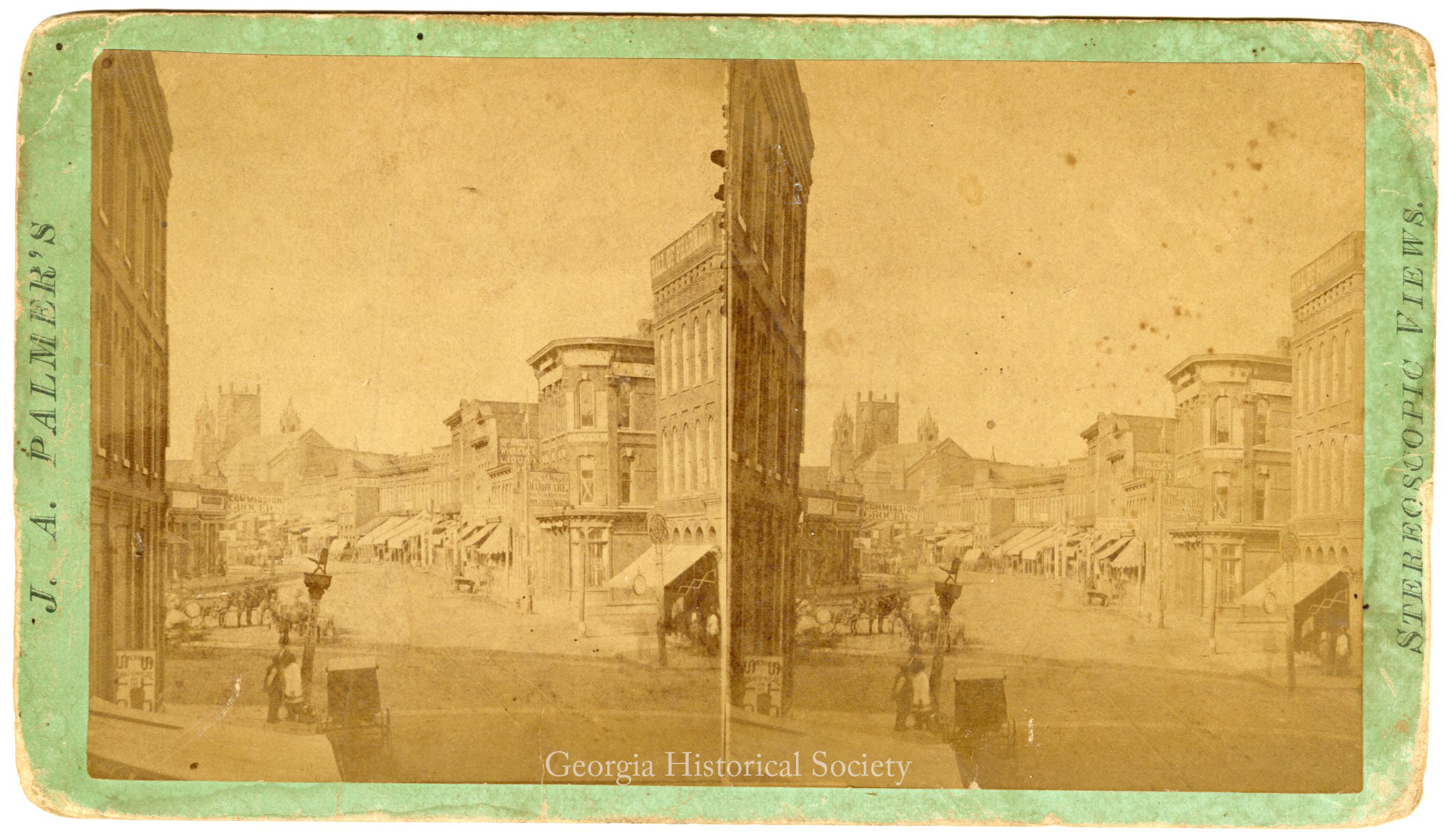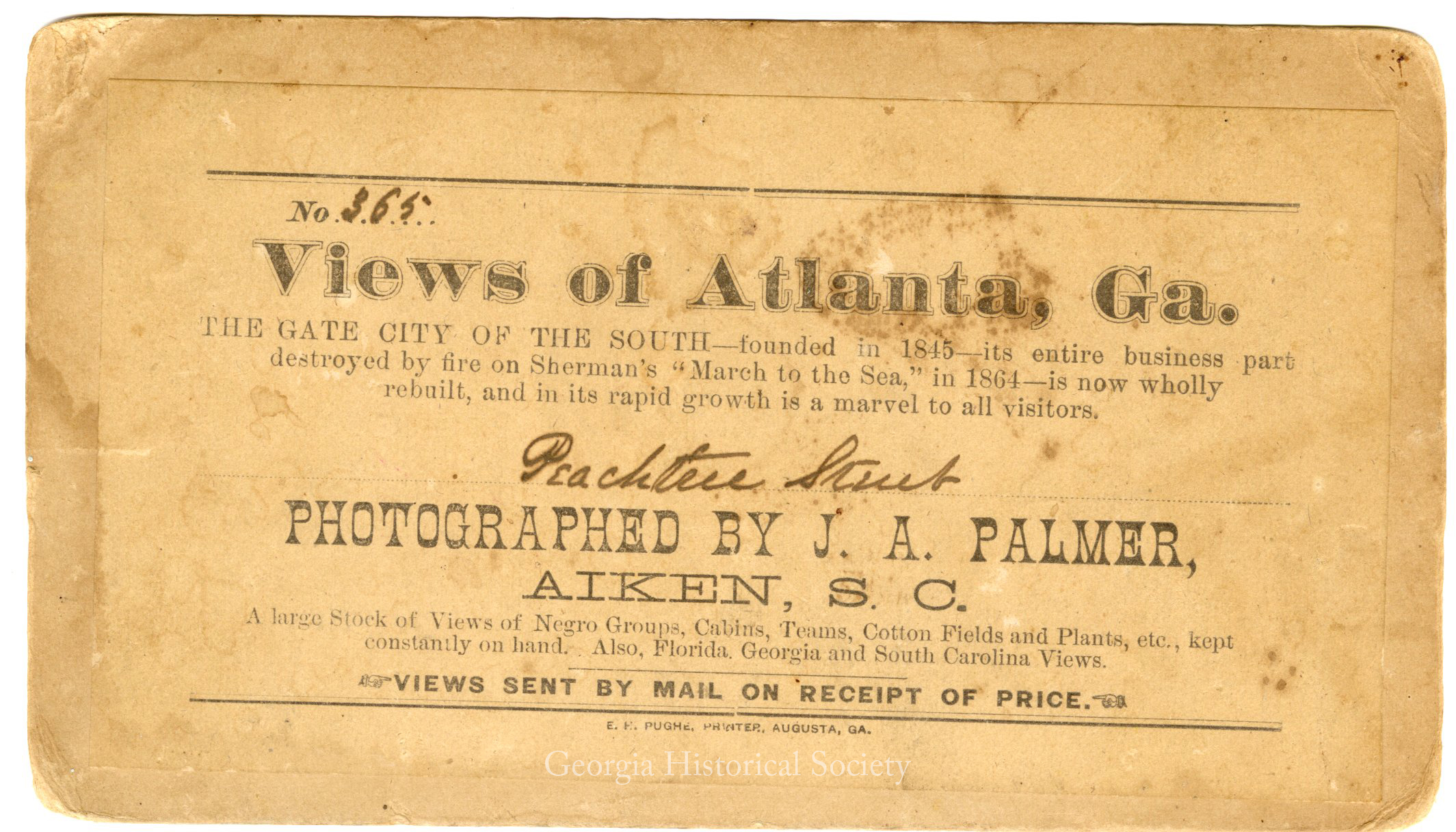More (Limited) Destruction of Atlanta
Last month, the Georgia Historical Society kindly shared with us a photo from their collection that illustrated the limits of the destruction Gen. William T. Sherman visited upon Atlanta. (See it here.) Today, we’re pleased to feature a companion image the GHS has just procured. The piece, from the same set of photographs, is titled “Peachtree Street, Post-Civil War Atlanta” and shows another view of the rebuilt business district.

Here’s a look at the reverse side:

“Peachtree Street, Post-Civil War Atlanta. GHS 1361-SG Georgia Historical Society stereograph collection. Georgia Historical Society, Savannah, Georgia.”
ECW thanks Dr. Todd Groce, president and executive director, and Nate Pedersen, manager of the archival and reference team–and of course the Georgia Historical Society itself–for sharing these images.
I love how the Shermanophiles want to have it both ways. On the one hand the vile rebels deserved everything that he meted out, as he was only trying to politely nudge them toward surrender. On the other, Sparky and his Roving Arsonists really only did a modest amount of urban and rural renewal, easily tidied up after the war. Of course, if the later is true, then the whole purpose of his Grand Tour was a self deceptive fraud, in that, as after his Meridien Expedition, the locals could have quickly cleaned up behind him. I think the discussion should be shifted to the strategic worth of his prolonged Anabasis, as contrasted with its alternatives.
That is a great expression: “the limited destruction.” We could also say it was “just a partial war crime.”
Tom
Sherman said he wanted to “make Georgia howl”. I see that they’re still howling!
Not everybody in Georgia was howling….15,000 recently off the plantation without a hall pass black m/w/c where looking for a rental in Savannah.
John Bell Hood shares at least equal credit/blame. Hint – setting off 80 railcars of ammunition in the middle of downtown on Sept 1 didn’t do much for preservation, but did wonders for urban renewal. Sherman’s engineers had to go through the city chalking doors to mark uninhabitable structures during the occupation. Most of those buildings were burned. No other way to dispose of them.
Thank you Dave Powell for bringing some historical fact to the discussion.